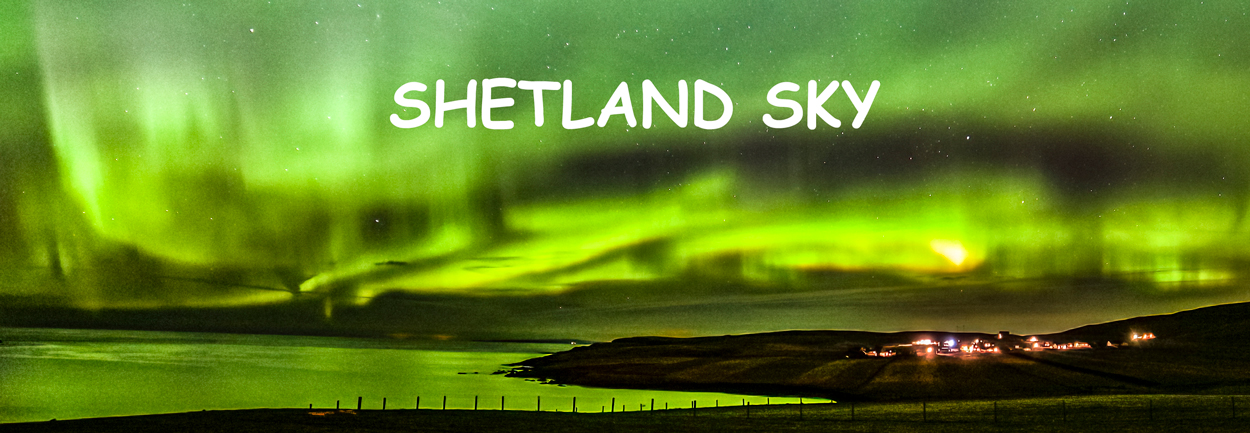`No colour and no brush is able to paint it;no words can describe it in all its grandeur' - Karl Weyprecht
If there is one thing people would like to see, its the aurora. These magical lights are very elusive but you can increase your chances of seeing the Northern Lights (Aurora) by living in an area that is as far north as you can go.
Shetland therefore has to be the best place, especially as a lot of auroras are dim even from Shetland, around KP4 and are therefore not normally seen further south. These last few days however have been better with KP6.5 recorded, but as luck would have it we had been out and missed it. Just as we headed on holiday a KP8 hit and people in Shetland had some amazing colours- and clear skies.
On Thursday we went up to Asta to listen to some music and looking through the window about 9pm i could see stars and a clear sky. The temptation was too strong, especially as there was no moon (Light pollution) so we decided to go up to the boat shed further up the valley.
We pulled up beside another car where two other people stood watching the sky to see whether any aurora would be visible. Both these people were German and had the spot recommended by their B&B.
The glow in the sky revealed that the aurora was present, but weak. I took a photo which showed a green glow, visible to the sensor in the camera but not to the untrained eye. They seemed quite amazed that they had been looking at the sky for over an hour but didn't realise that they had been seeing the aurora.
They left soon after and missed a stronger aurora quickly developing , along with the green glow (the normal colour) a layer of purple sat on top, curtains and pillars of light began to form and moved across the sky. It was an amazing sight, the best aurora we had seen since moving to Shetland. You cannot witness such a beautiful phenomenon without the sense of awe.
It just confirmed to us how quickly the aurora can develop and then recede, easy to miss especially if you have to travel a distance
The location was reasonable, a dark site but with a steady stream of cars coming down the valley. The red glow coming down from the wind turbines looked spooky. The International space station and a meteor added to the scene.
When photographing the aurora you need to ensure you have a strong tripod, one that doesn't get blown about in the wind. Be prepared to change settings when the aurora starts to develop. I usually start with around ISO 800 - 1000, with 20sec exposure using a Nikon D7000, Tokina 11-16mm lens at 11mm, at f/2.8
On Friday aurora alerts kept coming through the day, no good for seeing anything in the night sky, and as darkness fell the strong winds F7 and cloudy skies did nothing to encourage me to go out














No comments:
Post a Comment